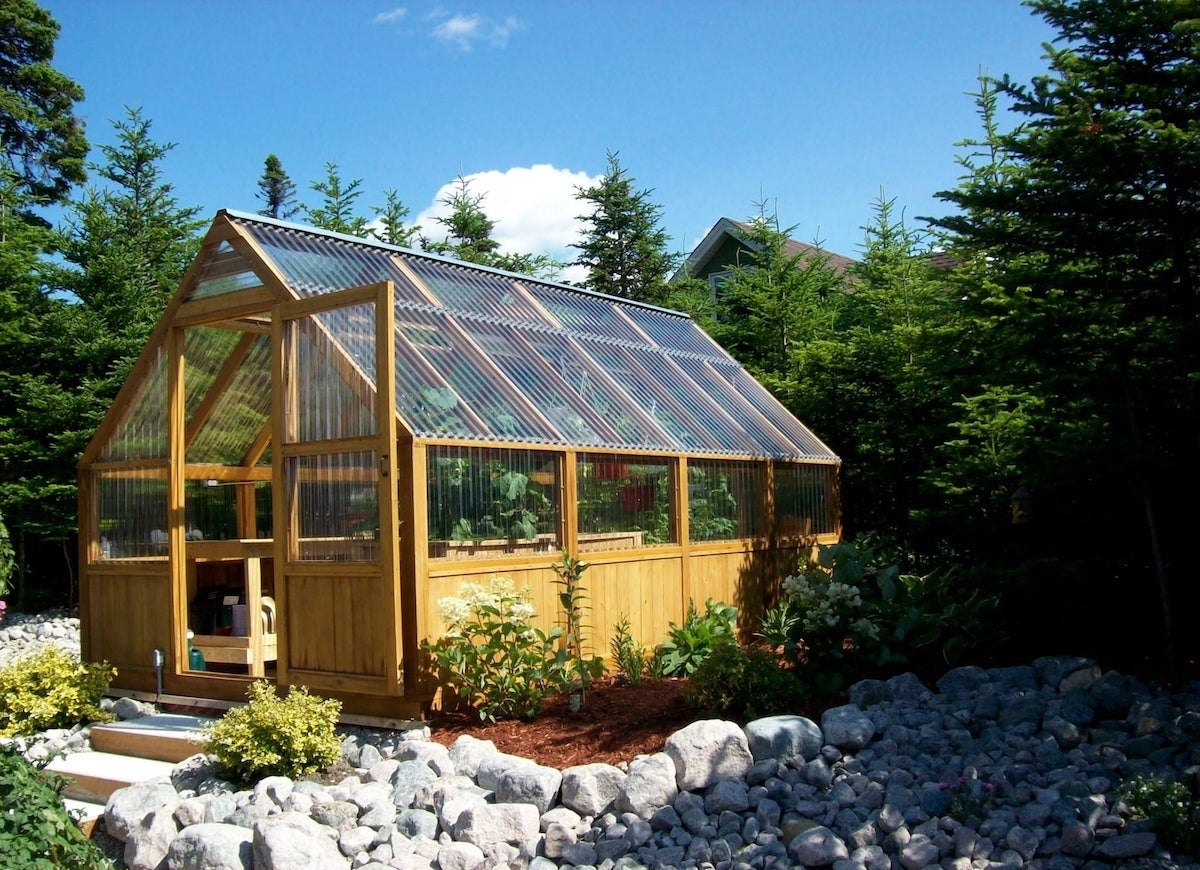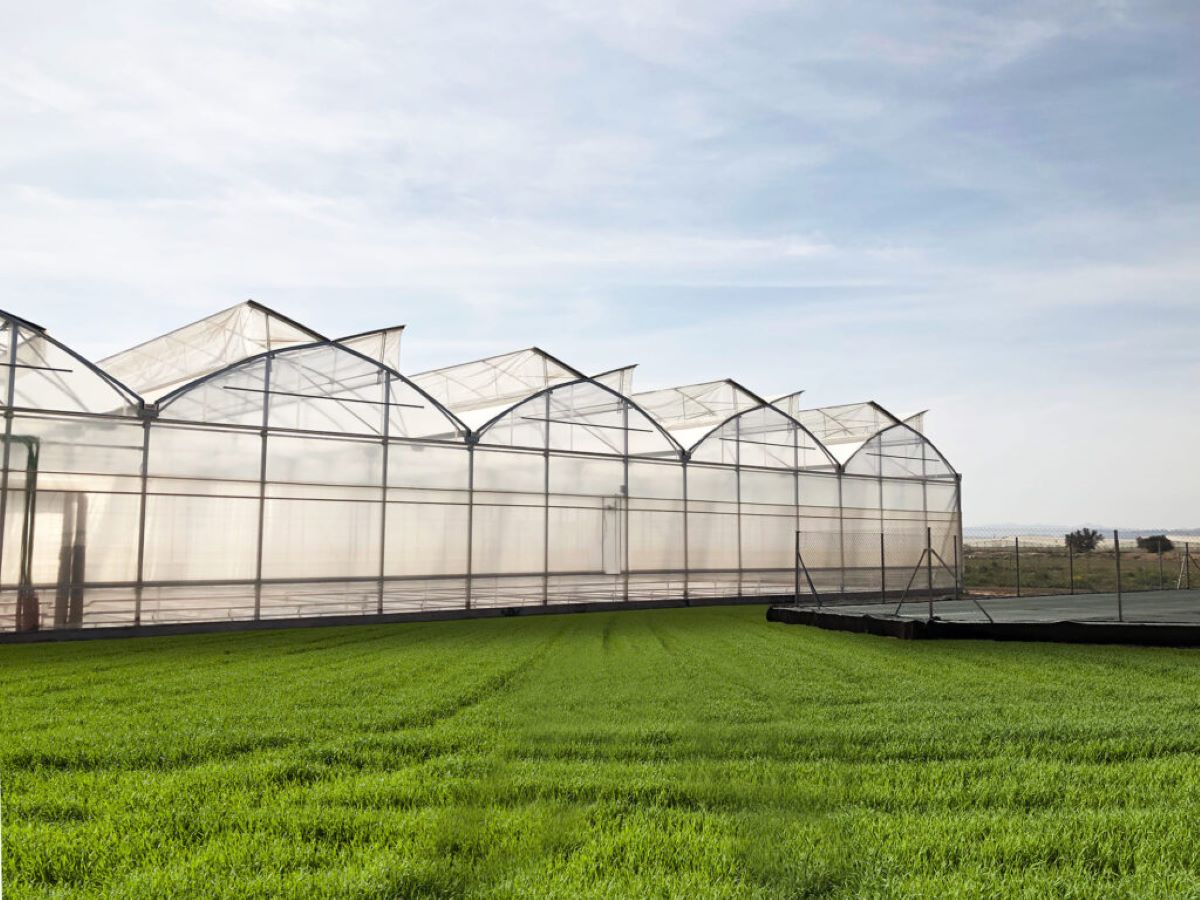Home>Gardening News and Trends>What Do Greenhouse Gasses Do?


Gardening News and Trends
What Do Greenhouse Gasses Do?
Modified: January 22, 2024
Discover the latest news on greenhouse gases and their impact on the environment. Learn how these gases contribute to climate change and global warming.
(Many of the links in this article redirect to a specific reviewed product. Your purchase of these products through affiliate links helps to generate commission for Chicagolandgardening.com, at no extra cost. Learn more)
Table of Contents
- Introduction
- Definition of Greenhouse Gases
- Role of Greenhouse Gases in Climate Change
- Greenhouse Gases and Global Warming
- Impact of Greenhouse Gases on Weather Patterns
- Relationship Between Greenhouse Gases and Sea Level Rise
- Effects of Greenhouse Gases on Ecosystems
- Human Activities and Greenhouse Gas Emissions
- Mitigation Strategies for Greenhouse Gases
- Conclusion
Introduction
The issue of climate change has become one of the most pressing concerns of our time. As the global temperature continues to rise, scientists have identified greenhouse gases as a major contributor to this phenomenon. But what exactly are greenhouse gases, and what role do they play in climate change?
Greenhouse gases are gases in the Earth’s atmosphere that trap heat and contribute to the greenhouse effect. This natural process is essential for supporting life on Earth, as it helps to maintain a stable temperature. However, human activities, such as burning fossil fuels and deforestation, have significantly increased the concentration of greenhouse gases in the atmosphere, leading to an enhanced greenhouse effect and the subsequent warming of the planet.
The primary greenhouse gases include carbon dioxide (CO2), methane (CH4), nitrous oxide (N2O), and fluorinated gases. These gases act as a blanket, preventing heat from escaping into space and causing the Earth’s surface and atmosphere to warm. This warming effect is commonly referred to as global warming.
The consequences of global warming are far-reaching and include more frequent and severe weather events, rising sea levels, and disruptions to ecosystems. Understanding the role of greenhouse gases in climate change is crucial in order to mitigate their impact and develop strategies to reduce greenhouse gas emissions.
In this article, we will delve deeper into the effects of greenhouse gases on the planet and explore the different aspects of their contribution to climate change. From the relationship between greenhouse gases and global warming to their impact on weather patterns and ecosystems, we will examine the significant ramifications of these gases. Additionally, we will discuss the role of human activities in greenhouse gas emissions and highlight potential mitigation strategies.
Definition of Greenhouse Gases
Greenhouse gases are gases that are present in the Earth’s atmosphere and have the ability to trap heat from the sun, contributing to the greenhouse effect. They allow sunlight (solar radiation) to enter the Earth’s atmosphere and reach the surface. However, instead of being reflected back into space, some of this energy is absorbed by the Earth’s surface and re-emitted as heat in the form of infrared radiation. Greenhouse gases absorb and re-emit this infrared radiation, trapping it in the atmosphere and causing the planet to warm.
The most significant greenhouse gases include carbon dioxide (CO2), methane (CH4), nitrous oxide (N2O), and fluorinated gases. CO2 is the primary greenhouse gas responsible for human-induced global warming and has a long atmospheric lifetime. It is produced by burning fossil fuels, deforestation, and other industrial processes. Methane, although less abundant than CO2, is a potent greenhouse gas with a higher warming potential. It is produced by natural processes, such as the decay of organic matter in wetlands, as well as human activities like livestock farming and the extraction and transport of fossil fuels. Nitrous oxide is produced by natural and human activities, including agricultural and industrial processes. Fluorinated gases, such as hydrofluorocarbons (HFCs) and sulfur hexafluoride (SF6), are synthetic greenhouse gases used in various industrial applications.
It’s important to note that not all gases in the atmosphere contribute to the greenhouse effect. For example, oxygen (O2) and nitrogen (N2), which together make up the majority of the atmosphere, do not have the same heat-trapping properties as greenhouse gases. These two gases are transparent to infrared radiation and do not significantly contribute to climate change.
The greenhouse effect is an essential natural process that helps to regulate the Earth’s temperature and make it habitable. Without greenhouse gases, the planet would be much colder, and life as we know it would not exist. However, the increased concentration of greenhouse gases in the atmosphere, primarily due to human activities, has caused an imbalance in the natural greenhouse effect. This imbalance has led to an enhanced greenhouse effect and the subsequent warming of the Earth’s climate.
In the following sections, we will delve deeper into the role of greenhouse gases in climate change, exploring their impact on global warming, weather patterns, ecosystems, and sea level rise. We will also discuss the human activities that contribute to greenhouse gas emissions and examine strategies for mitigating their effects.
Role of Greenhouse Gases in Climate Change
Greenhouse gases play a crucial role in climate change by trapping heat in the Earth’s atmosphere, which leads to a rise in global temperatures. The greenhouse effect, created by these gases, is a natural process that helps regulate the Earth’s temperature, making it habitable for life.
When solar radiation reaches the Earth’s surface, greenhouse gases allow some of it to pass through. However, they also trap a portion of the heat that is radiated back from the Earth’s surface as infrared radiation. This trapped heat warms the planet and contributes to the overall rise in global temperatures.
The increase in greenhouse gases, primarily due to human activities, has intensified the greenhouse effect, leading to a phenomenon known as global warming. As the concentration of greenhouse gases, especially carbon dioxide, continues to rise, the Earth’s climate system is being pushed out of balance.
One of the main consequences of global warming is the long-term trend of increasing average temperatures. This rise in temperatures has been observed over several decades and is linked to various environmental changes. Rising temperatures affect weather patterns, ecosystems, and the overall stability of our planet.
Moreover, greenhouse gases have a cumulative effect. Once emitted into the atmosphere, these gases can remain there for extended periods, sometimes several decades or even centuries. This means that the greenhouse gases emitted today will continue to contribute to climate change and global warming for many years to come.
Another critical aspect of the role of greenhouse gases in climate change is their influence on the energy balance of the Earth. As the Earth warms, it affects the distribution of energy throughout the planet, leading to changes in atmospheric circulation, precipitation patterns, and ocean currents.
These changes in climate can result in extreme weather events, such as heatwaves, droughts, wildfires, and intense storms. The frequency and intensity of these events have been increasing in recent years, causing significant damage to communities and economies worldwide.
It’s important to note that while greenhouse gases are primarily responsible for global warming, they are not the sole factor influencing climate change. Other factors, such as solar radiation, volcanic activity, and natural variability, also contribute to climate variations. However, the impact of greenhouse gases on climate change is substantial and well-documented by scientific research.
In the next sections, we will explore the specific effects of greenhouse gases on global warming, weather patterns, ecosystems, and sea level rise. Understanding these effects is crucial in developing strategies to mitigate climate change and reduce greenhouse gas emissions.
Greenhouse Gases and Global Warming
Greenhouse gases are the primary drivers of global warming, which refers to the long-term increase in average global temperatures. The increased concentration of greenhouse gases in the Earth’s atmosphere has caused an enhanced greenhouse effect, trapping more heat and leading to a rise in global temperatures.
Carbon dioxide (CO2) is the most significant greenhouse gas contributing to global warming. It is emitted into the atmosphere primarily through the burning of fossil fuels such as coal, oil, and natural gas for energy production, transportation, and industrial processes. Deforestation also contributes to CO2 emissions, as trees absorb CO2 and release it when they are cut down and burned.
Other greenhouse gases, such as methane (CH4) and nitrous oxide (N2O), also contribute to global warming. Methane is emitted during the production and transport of coal, oil, and natural gas, as well as from livestock and other agricultural practices. Nitrous oxide is released from natural and human activities, including agricultural and industrial processes and the combustion of fossil fuels.
One of the critical aspects of global warming caused by greenhouse gases is the increase in average surface temperatures. Scientists have observed a significant and sustained rise in global temperatures over the past century. This temperature increase has far-reaching implications for the Earth’s climate system, weather patterns, and the stability of ecosystems.
The consequences of global warming include rising sea levels, shrinking ice caps and glaciers, melting permafrost, and more frequent and intense heatwaves and extreme weather events. These changes have wide-ranging impacts on both human and natural systems, including agriculture, water resources, biodiversity, and public health.
Furthermore, global warming can lead to various feedback mechanisms that amplify the warming effect. For example, as ice and snow melt, they expose darker surfaces, such as land or open water, which absorb more sunlight and contribute to further warming. This process is known as the ice-albedo feedback. Another feedback mechanism involves the release of methane from thawing permafrost, which is a potent greenhouse gas that can further contribute to global warming.
To address global warming, international efforts have been made to reduce greenhouse gas emissions and transition to cleaner and more sustainable energy sources. The Paris Agreement, signed by almost all countries in 2015, aims to limit global warming to well below 2 degrees Celsius above pre-industrial levels and pursue efforts to limit the temperature increase to 1.5 degrees Celsius.
While the task of mitigating global warming may seem daunting, individual actions can also make a difference. Energy conservation, adopting renewable energy sources, reducing waste, and promoting sustainable transportation are just a few examples of how individuals, communities, and businesses can contribute to reducing greenhouse gas emissions and combating global warming.
As we continue to understand the complex relationship between greenhouse gases and global warming, it becomes increasingly evident that urgent action is needed to mitigate climate change and ensure a sustainable future for our planet and future generations.
Impact of Greenhouse Gases on Weather Patterns
The increase in greenhouse gases, primarily carbon dioxide (CO2) and methane (CH4), is not only contributing to global warming but also affecting weather patterns worldwide. As these gases trap heat in the Earth’s atmosphere, they create significant changes in the climate system, leading to alterations in weather conditions and the frequency and intensity of extreme weather events.
One of the noticeable impacts of greenhouse gases on weather patterns is the increase in temperature extremes. Heatwaves, characterized by persistently high temperatures, become more frequent and intense as global warming progresses. These heatwaves can have severe consequences, including heat-related illnesses, reduced agricultural productivity, and increased energy demands for cooling.
Changes in precipitation patterns are also influenced by greenhouse gases. Warmer temperatures lead to increased evaporation, resulting in intensified rainfall in some regions. This can lead to an increased risk of flooding, as the soil may not be able to absorb the excess water. Conversely, other regions may experience prolonged periods of drought due to changes in atmospheric moisture and rainfall patterns.
Greenhouse gases can also affect the intensity and frequency of storms. While it is challenging to attribute a single storm to global warming, there is evidence that warmer temperatures contribute to the intensification of hurricanes, typhoons, and other tropical cyclones. Warmer ocean waters provide more energy for these storms, making them more powerful and potentially more destructive.
Another significant impact of greenhouse gases on weather patterns is the disruption of atmospheric circulation patterns. These patterns, such as jet streams and ocean currents, play a crucial role in distributing heat and moisture around the planet. Changes in the strength and position of these circulation patterns can lead to shifts in weather patterns, including changes in rainfall distribution and the occurrence of weather extremes.
Rising sea surface temperatures, influenced by greenhouse gases, can also lead to the formation of oceanic phenomena such as El Niño and La Niña. These climate patterns in the tropical Pacific Ocean have global implications, affecting weather patterns and precipitation in various regions around the world. El Niño events, characterized by warmer-than-average sea surface temperatures, can lead to droughts in some areas and increased rainfall in others.
It is important to note that while greenhouse gases are a significant influencing factor in weather pattern changes, other natural climate variability factors, such as volcanic activity and solar radiation, also contribute to these alterations. However, the long-term trend of increasing greenhouse gas concentrations is amplifying and exacerbating the impact of these natural climate factors on weather patterns.
Understanding the impact of greenhouse gases on weather patterns is crucial for policymakers, communities, and individuals to prepare for and adapt to changing climatic conditions. It highlights the importance of developing resilient infrastructure, implementing effective early warning systems, and promoting sustainable land and water management practices that can mitigate the risks associated with extreme weather events.
In the next section, we will explore the relationship between greenhouse gases and sea level rise, another significant consequence of climate change that poses a threat to coastal communities and ecosystems worldwide.
Relationship Between Greenhouse Gases and Sea Level Rise
Greenhouse gases, particularly carbon dioxide (CO2), play a significant role in the ongoing rise of global sea levels. As the Earth’s climate system warms due to the increasing concentration of greenhouse gases in the atmosphere, this warming affects the melting of glaciers and ice caps, as well as the thermal expansion of seawater, both of which contribute to sea level rise.
One of the primary contributors to sea level rise is the melting of glaciers and ice caps. These frozen masses of freshwater are found in many parts of the world, including Greenland, Antarctica, and various mountain ranges. As temperatures rise, the glaciers and ice caps start to melt, and the resulting water flows into the oceans, increasing sea levels.
Greenhouse gases also cause the thermal expansion of seawater. As the Earth’s atmosphere warms, the heat is transferred to the oceans, leading to an increase in seawater temperature. Warmer water expands, occupying a larger volume, and consequently raises the overall sea level. This thermal expansion of seawater is a significant contributor to current sea level rise.
It is important to note that the rate of sea level rise is not constant globally. Regional variations in factors such as ocean currents, winds, and geological processes can lead to differences in sea level rise rates. Additionally, factors such as land subsidence and groundwater extraction can also contribute to localized variations in sea level.
The implications of rising sea levels are substantial. Low-lying coastal regions, including cities and communities around the world, are at risk of increased flooding and storm surges. With higher sea levels, even minor increases in extreme high tides can result in more significant flooding events, causing damage to infrastructure, displacement of populations, and the loss of valuable coastal ecosystems.
Coastal erosion is another consequence of rising sea levels. As the water encroaches on coastal areas, it can erode beaches, cliffs, and other coastal landforms. This erosion threatens coastal habitats, including wetlands, mangroves, and coral reefs, which provide crucial protective barriers and support diverse marine ecosystems.
The effects of sea level rise are not limited to coastal areas. Inland, low-lying river deltas and estuaries are also vulnerable as higher sea levels can cause saltwater intrusion into freshwater systems, affecting agriculture, drinking water supplies, and ecosystems that rely on freshwater inflows.
Addressing the issue of rising sea levels requires a multi-faceted approach, including reducing greenhouse gas emissions, adapting coastal management strategies, and implementing measures to strengthen coastal resilience. Coastal defenses such as sea walls, levees, and dikes can provide temporary protection but are not long-term solutions; instead, a comprehensive approach that considers sustainable land-use planning, ecosystem restoration, and adaptive infrastructure is needed.
By understanding the relationship between greenhouse gases and sea level rise, we can make informed decisions to mitigate the impacts and develop adaptive strategies that protect vulnerable coastal communities and ecosystems.
Effects of Greenhouse Gases on Ecosystems
The increasing concentration of greenhouse gases in the Earth’s atmosphere has significant impacts on ecosystems around the world. These gases, particularly carbon dioxide (CO2) and methane (CH4), alter ecological processes, disrupt biodiversity, and have far-reaching consequences for the health and functioning of ecosystems.
One of the major effects of greenhouse gases on ecosystems is their influence on plant growth and productivity. CO2 is a vital ingredient for photosynthesis – the process by which plants use sunlight to convert CO2 into energy-rich carbohydrates. Higher levels of atmospheric CO2 can enhance photosynthetic rates and boost plant growth. However, this effect is not consistent across all plant species, and other limiting factors, such as nutrient availability and water availability, can also influence plant responses to elevated CO2.
While some plant species may benefit from increased CO2 levels, others may experience negative impacts. Changes in CO2 levels can alter the competitive balance among plant species, favoring certain species over others. This can lead to shifts in plant communities and affect biodiversity patterns.
Furthermore, elevated CO2 levels can also affect the nutritional quality of plants. Some studies suggest that higher CO2 concentrations can decrease the nutrient content of certain crops, such as grains and legumes, potentially leading to nutritional deficiencies in organisms that depend on these plants for food.
Greenhouse gases also influence the behavior and distribution of animal species. Changes in temperature, precipitation patterns, and vegetation dynamics can affect the availability of food, nesting sites, and habitats for various animal species. Some species may be able to adapt and shift their ranges in response to changing conditions, while others may face challenges as their suitable habitats shrink or become fragmented.
The impacts of rising greenhouse gas levels on marine ecosystems are also profound. Increased CO2 levels lead to ocean acidification, as the excess CO2 absorbed by seawater reacts with water molecules, producing carbonic acid. This acidification hampers the ability of shell-forming organisms, such as corals, mollusks, and certain types of plankton, to build and maintain their calcium carbonate structures. This has significant implications for the health of coral reefs and the abundance of various marine species that depend on these habitats for survival.
Furthermore, the warming of ocean temperatures due to greenhouse gases affects marine ecosystems in multiple ways. It can cause changes in the distribution and abundance of marine species, alter species interactions, and lead to coral bleaching events – the loss of color and deterioration of coral reefs due to stressed and dying coral polyps.
Overall, the effects of greenhouse gases on ecosystems are complex and have cascading impacts throughout ecological systems. Changes in plant growth, shifts in species distributions, altered nutrient dynamics, and disruptions to marine ecosystems are just a few of the consequences. These changes can have profound implications for biodiversity, ecosystem function, and the services that ecosystems provide, such as water purification, carbon storage, and climate regulation.
Understanding and mitigating the effects of greenhouse gases on ecosystems is crucial for preserving the health and resilience of these systems. Conservation efforts, sustainable land-use practices, and measures to reduce greenhouse gas emissions can help protect and restore ecosystems, ensuring their functioning and stability for future generations.
Human Activities and Greenhouse Gas Emissions
Human activities are the primary drivers of the increase in greenhouse gas emissions, leading to the intensification of the greenhouse effect and exacerbating climate change. Various sectors and processes contribute to these emissions, including energy production, transportation, industry, agriculture, and deforestation.
One of the major contributors to greenhouse gas emissions is the burning of fossil fuels for energy. The combustion of coal, oil, and natural gas releases carbon dioxide (CO2) into the atmosphere. Energy production from fossil fuels accounts for a significant proportion of global CO2 emissions. Industries, power plants, and transportation are major culprits in this regard.
Transportation is responsible for a significant portion of greenhouse gas emissions. The burning of gasoline and diesel fuels in cars, trucks, ships, and planes releases CO2 into the atmosphere. In addition, the production and transportation of these fuels also generate greenhouse gas emissions. Efforts to reduce transportation emissions include promoting the use of electric vehicles, improving fuel efficiency, and developing sustainable transportation infrastructure.
Industrial processes, particularly those involving the production of cement, steel, and chemicals, are also significant contributors to greenhouse gas emissions. Chemical reactions during cement production release CO2, while the burning of fossil fuels for energy in industrial facilities emits CO2, methane (CH4), and other greenhouse gases. Implementing cleaner and more efficient technologies, as well as adopting sustainable practices, can help reduce emissions from these sectors.
Agriculture is another significant source of greenhouse gas emissions. Activities such as enteric fermentation in livestock, rice cultivation, and the use of synthetic fertilizers contribute to the release of CH4 and nitrous oxide (N2O), both potent greenhouse gases. Sustainable agricultural practices, including improved livestock management, precision farming, and organic farming methods, can help reduce emissions from this sector.
Deforestation and land use change also contribute to greenhouse gas emissions. Forests play a crucial role in absorbing and storing carbon dioxide. When forests are cleared for agriculture, logging, or urban development, the stored carbon is released back into the atmosphere. Reducing deforestation, implementing reforestation and afforestation projects, and promoting sustainable land management practices are key strategies to mitigate greenhouse gas emissions from land use change.
Addressing greenhouse gas emissions and climate change requires a multi-faceted approach. It involves transitioning to cleaner and renewable energy sources, improving energy efficiency, implementing sustainable transportation systems, promoting sustainable and regenerative agriculture, and adopting land management practices that restore and protect ecosystems.
International agreements, such as the Paris Agreement, aim to limit global warming by reducing greenhouse gas emissions and transitioning to a low-carbon and climate-resilient future. Local and national actions, as well as individual choices, can also contribute to reducing emissions and creating a more sustainable and resilient planet for future generations.
Mitigation Strategies for Greenhouse Gases
Addressing the challenge of greenhouse gas emissions requires a comprehensive set of mitigation strategies aimed at reducing the release of these gases into the atmosphere. These strategies encompass various sectors and involve changes in energy production, transportation, industry, agriculture, and land management practices.
Transitioning from fossil fuels to renewable energy sources is a fundamental step in mitigating greenhouse gas emissions. Increasing the deployment of solar, wind, hydro, and geothermal energy can help reduce carbon dioxide (CO2) emissions from energy production. Additionally, improving energy efficiency in buildings, transportation, and industrial processes can significantly reduce energy demand and emissions.
Another critical aspect of mitigation strategies is transitioning to cleaner transportation systems. Promoting the use of electric vehicles, investing in public transportation, and adopting more sustainable modes of transportation, such as walking and cycling, can significantly reduce greenhouse gas emissions from the transportation sector.
Reducing emissions from industrial processes involves implementing technologies and practices that enhance energy efficiency, promote recycling and reuse of materials, and adopt cleaner production methods. These measures can lead to significant reductions in CO2 and other greenhouse gas emissions, while also improving resource efficiency and reducing waste.
In agriculture, adopting sustainable and regenerative practices can contribute to greenhouse gas mitigation. Precision farming techniques, such as optimizing fertilizer use, reducing tillage, and improving nutrient management, can reduce emissions of nitrous oxide (N2O) and methane (CH4) from agricultural activities. Additionally, promoting agroforestry, organic farming, and sustainable livestock management practices can also help reduce emissions and increase carbon sequestration in soils and vegetation.
Conserving and restoring forests and other natural ecosystems is an effective strategy for mitigating greenhouse gas emissions. Forests act as carbon sinks, absorbing CO2 from the atmosphere and storing it in vegetation and soil. Protecting existing forests, implementing reforestation and afforestation projects, and promoting sustainable land use practices can help sequester carbon and reduce emissions from deforestation and land use change.
Reducing emissions from the residential and commercial sectors can be achieved through energy-efficient building design and construction, as well as the adoption of sustainable practices in heating, ventilation, air conditioning, and lighting systems. Additionally, promoting the use of renewable energy sources for heating and cooling can further contribute to emissions reduction.
International cooperation and policy frameworks, such as the Paris Agreement, play a crucial role in promoting and implementing mitigation strategies. National governments and local authorities also have a vital role to play in setting policies, providing incentives, and implementing regulations that encourage emissions reduction and the adoption of sustainable practices.
Individual actions and lifestyle choices can also make a difference. This can include reducing energy consumption, practicing waste reduction and recycling, supporting sustainable businesses, and advocating for climate-friendly policies in communities and institutions.
Combating climate change and mitigating greenhouse gas emissions require a combination of efforts at global, national, and individual levels. By implementing a range of mitigation strategies across sectors, we can work towards a more sustainable and resilient future, reducing the impact of greenhouse gases on our planet.
Conclusion
The role of greenhouse gases in climate change and their impact on our planet cannot be overstated. The increase in greenhouse gas emissions, primarily due to human activities, has led to an enhanced greenhouse effect, resulting in global warming and numerous environmental consequences.
Understanding the definition of greenhouse gases and their effects on climate change is crucial for developing strategies to mitigate their impact. Greenhouse gases trap heat in the Earth’s atmosphere, leading to a rise in global temperatures and the disruption of weather patterns. This warming effect contributes to rising sea levels, loss of biodiversity, changes in ecosystems, and more frequent and intense extreme weather events.
Tackling the issue of greenhouse gas emissions requires a multi-faceted and comprehensive approach. Mitigation strategies, such as transitioning to renewable energy sources, improving energy efficiency, adopting sustainable land and water management practices, and promoting sustainable transportation and industrial practices, can significantly reduce emissions.
International cooperation and policy frameworks, like the Paris Agreement, provide a platform for collective action and collaboration in addressing climate change. However, individual actions and choices also play a vital role in mitigating greenhouse gas emissions. Conserving energy, reducing waste, supporting sustainable businesses, and advocating for climate-friendly policies are just a few examples of the actions individuals can take to contribute to the global effort.
As we strive towards a more sustainable and resilient future, it is crucial to recognize the interconnectedness of greenhouse gas emissions, climate change, and their impact on our planet. By implementing effective mitigation strategies, adopting sustainable practices, and promoting awareness and education, we can work towards minimizing the effects of greenhouse gases, preserving our ecosystems, and ensuring a better world for generations to come.








